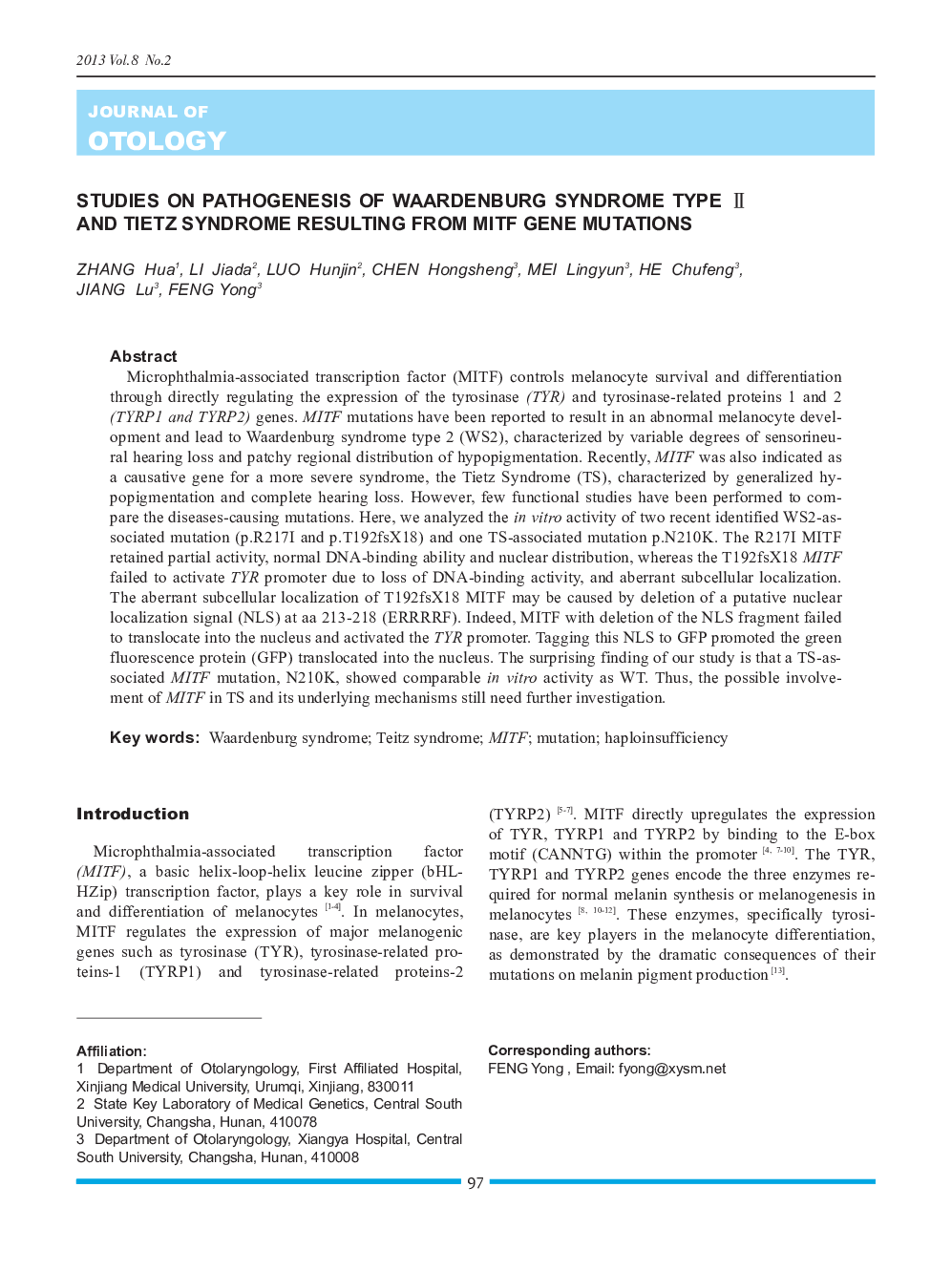| Article ID | Journal | Published Year | Pages | File Type |
|---|---|---|---|---|
| 4116811 | Journal of Otology | 2013 | 7 Pages |
Microphthalmia-associated transcription factor (MITF) controls melanocyte survival and differentiation through directly regulating the expression of the tyrosinase (TYR) and tyrosinase-related proteins 1 and 2 (TYRP1 and TYRP2) genes. MITF mutations have been reported to result in an abnormal melanocyte development and lead to Waardenburg syndrome type 2 (WS2), characterized by variable degrees of sensorineural hearing loss and patchy regional distribution of hypopigmentation. Recently, MITF was also indicated as a causative gene for a more severe syndrome, the Tietz Syndrome (TS), characterized by generalized hypopigmentation and complete hearing loss. However, few functional studies have been performed to compare the diseases-causing mutations. Here, we analyzed the in vitro activity of two recent identified WS2-associated mutation (p.R217I and p.T192fsX18) and one TS-associated mutation p.N210K. The R217I MITF retained partial activity, normal DNA-binding ability and nuclear distribution, whereas the T192fsX18 MITF failed to activate TYR promoter due to loss of DNA-binding activity, and aberrant subcellular localization. The aberrant subcellular localization of T192fsX18 MITF may be caused by deletion of a putative nuclear localization signal (NLS) at aa 213-218 (ERRRRF). Indeed, MITF with deletion of the NLS fragment failed to translocate into the nucleus and activated the TYR promoter. Tagging this NLS to GFP promoted the green fluorescence protein (GFP) translocated into the nucleus. The surprising finding of our study is that a TS-associated MITF mutation, N210K, showed comparable in vitro activity as WT. Thus, the possible involvement of MITF in TS and its underlying mechanisms still need further investigation.
